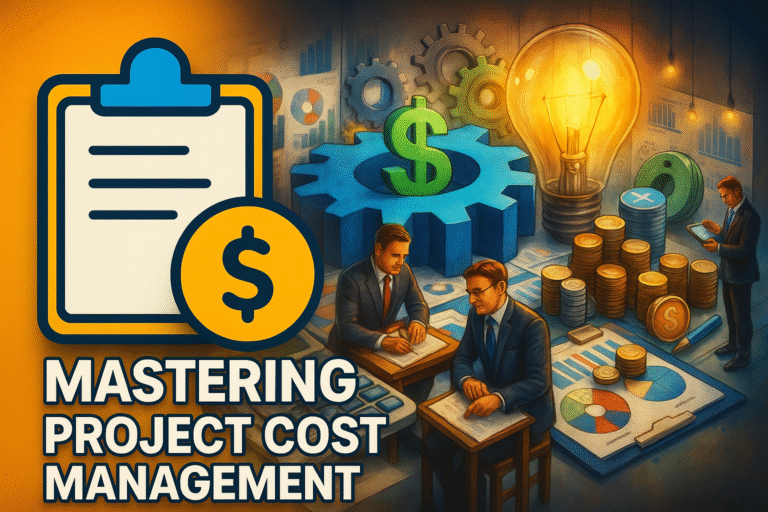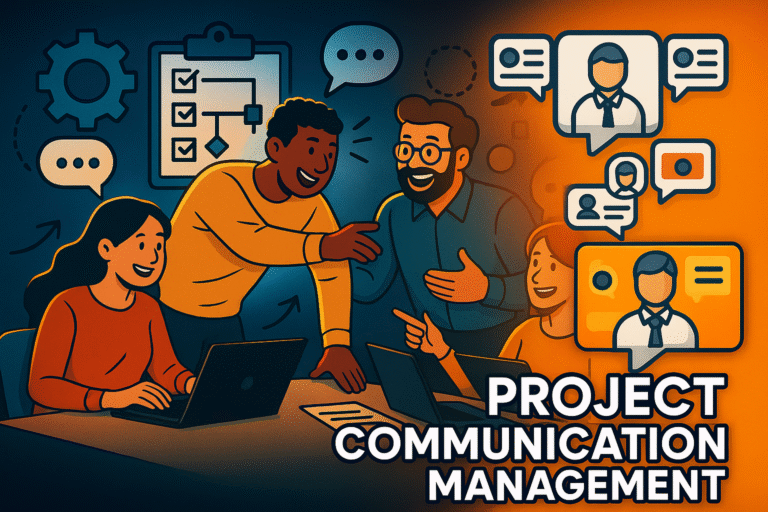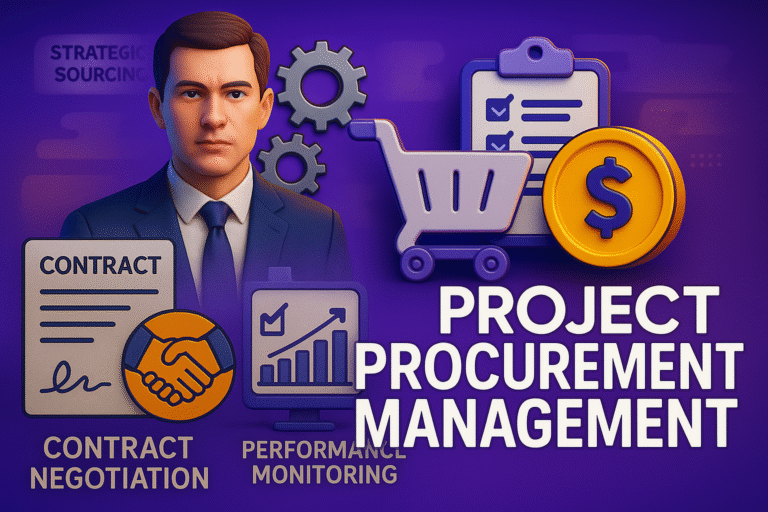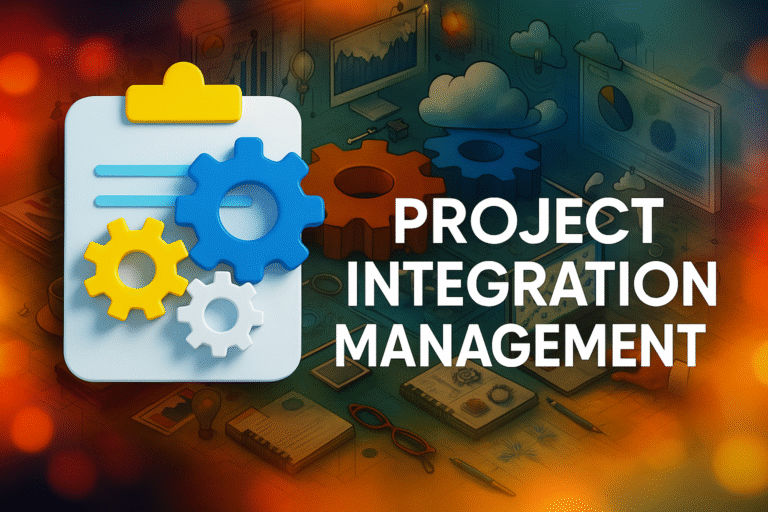Project Risk Management Plan – Delivering Projects with Confidence: A Practical, PMI-RMP-Aligned Guide to Project Risk Management
1. Why Risk Management Is Your Project’s Silent Power Source
Projects hardly ever derail because people lack talent or dedication; they derail because the unknowns were not managed early enough.
Risk management is the discipline that turns those unknowns into actionable foresight. When done well it will:
- Guard time & budget issues are caught when they are cheapest to fix.
- Focus resources on the work that profoundly moves the needle.
- Boost stakeholder confidence with transparent, data-driven decisions.
- Unlock upside by treating opportunity risks with the same rigor as threats.
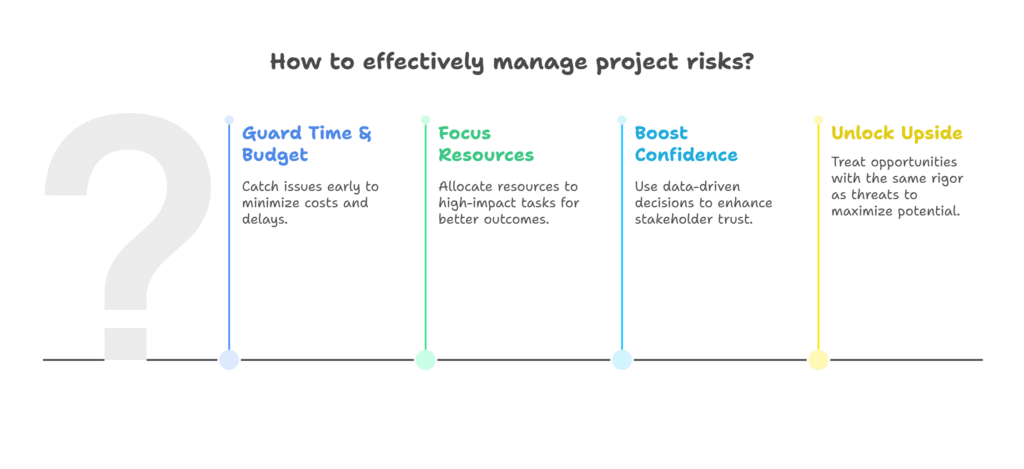
Bottom line: mastering risk management is the fastest path to predictable delivery and the PMI-RMP credential proves you can lead that charge.
2. Inside the PMI-RMP Credential
| Quick Facts | Details |
| Audience | Project Managers / Risk Managers / Functional Managers / C-Suite Executives who lead risk effort |
| Exam | 115 Qs (15 unscored) • 2.5 hrs • 5 domains |
| Core Domains | Risk Strategy & Planning • Risk Identification • Risk Analysis • Risk Response • Monitor and Close Risks |
| Check PMI Site for More Details | Risk Management Professional (PMI-RMP) Certification | PMI |
Why pursue it?
- Global credibility: PMI certifications are HR’s gold standard.
- Career insulation: you are the go-to problem spotter & solver.
- Larger remit: organizations entrust RMPs with complex, high-stakes initiatives.
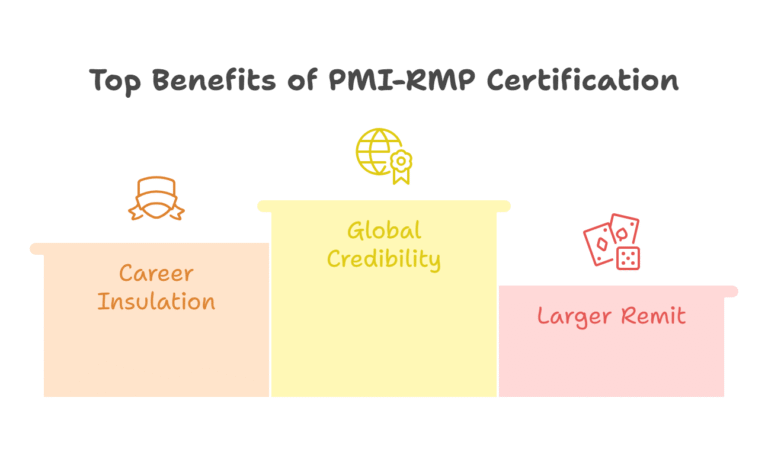
3. Big-Picture Benefits of a Robust Risk Practice
- Higher success rates: PMI’s Pulse data show projects with mature risk cultures are 2× likelier to meet goals.
- Improved stakeholder trust: clear escalation paths replace surprise fire-drills.
- Lean resource spend initiative-taking mitigation is cheaper than last-minute heroics.
- Competitive advantage: fewer overruns mean more capital for innovation.
- Professional growth: the skill transfers across industries, markets, project types.
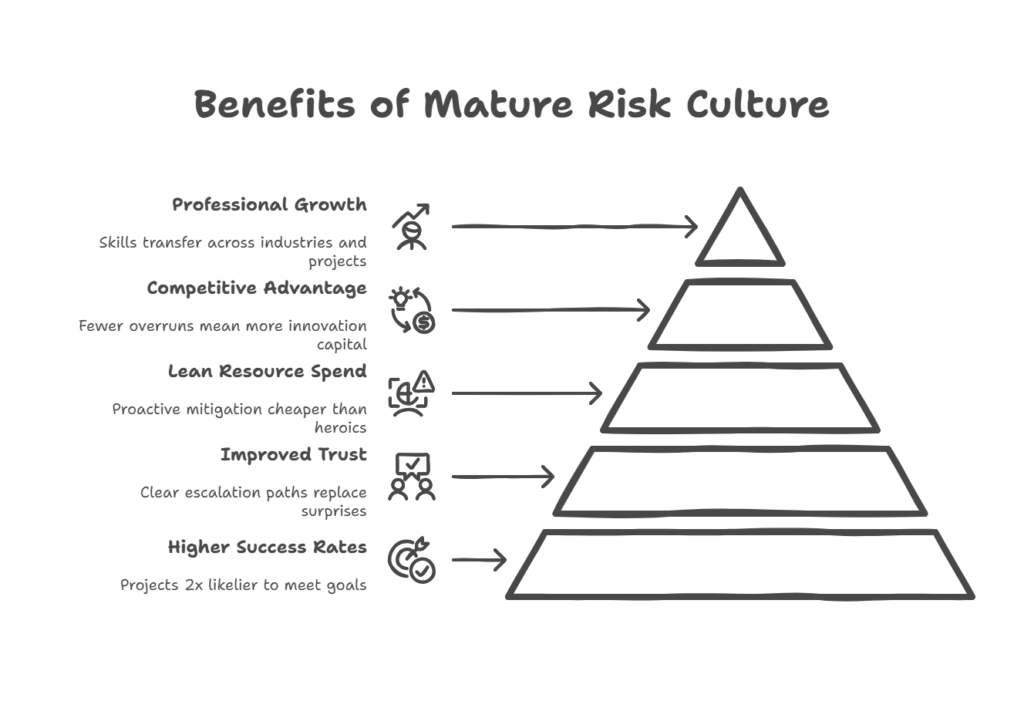
4. The PMI-RMP’s Role on a Project Team
| Hat, You Wear | Real-World Actions |
| Facilitator | Run risk workshops, draw out cross-functional insights |
| Analyst | Quantify probability/impact, build risk matrices & Monte Carlo sims |
| Strategist | Map responses: avoid, transfer, mitigate, accept, exploit |
| Coach | Uplevel the team’s awareness & ownership of risk |
| Communicator | Report exposure trends to sponsors, trigger escalations early |
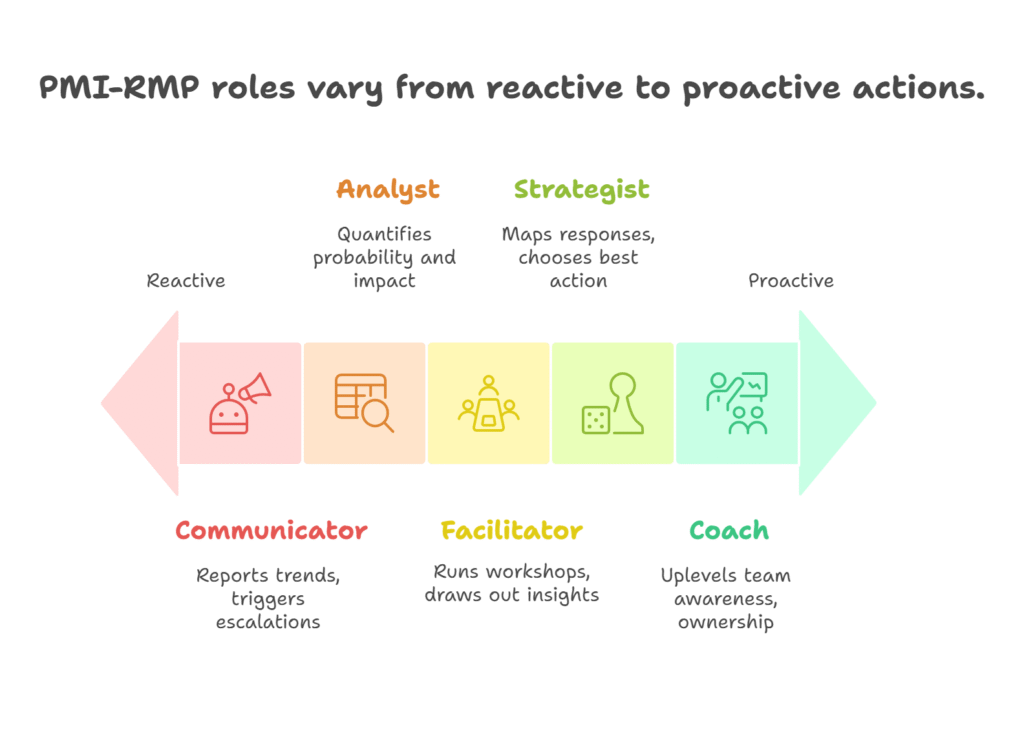
5. Core Concepts Every Risk Professional Must Nail
5.1 Risk vs. Risk Management
| Term | Meaning |
| Risk | Anything uncertain that can help or hurt objectives |
| Threat | A negative risk: delays, cost blowouts, quality hits |
| Opportunity | A positive risk: faster delivery, cost savings, extra scope at no cost |
| Risk Management | The structured loop of identify → analyse → plan → act → monitor |
5.2 Risk Identification Techniques
- Brainstorming sessions (diverse voices = richer risk log)
- SWOT & PESTLE to scan external forces.
- Checklists from past projects & industry databases
- Assumption analysis what if critical assumptions prove false?
- Delphi surveys for anonymous expert consensus
- Lessons-learned repository mining
Tip: log everything first, filter later, early breadth prevents blind spots.
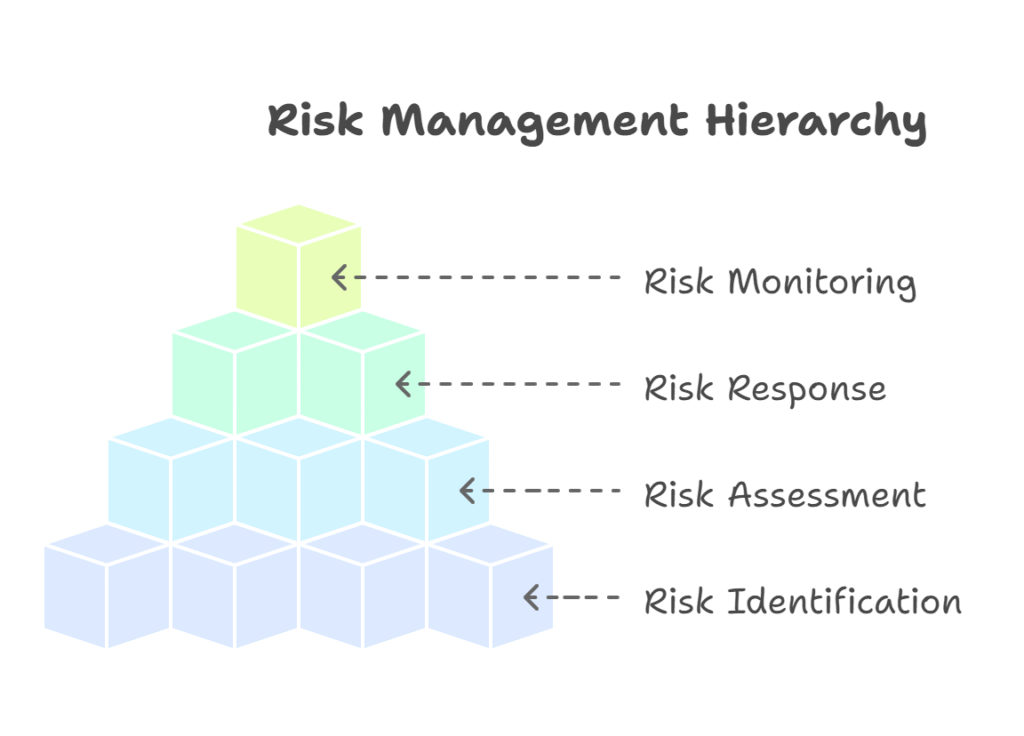
5.3 Risk Assessment & Prioritization
- Qualitative pass
- Rate probability (1-5) and impact (1-5).
- Visualize on a heat matrix, reds demand action now.
- Quantitative deep dive (for top threats)
- Expected Monetary Value (EMV) = probability × cost impact.
- Monte Carlo simulation for schedule or cost range forecasting.
- Prioritize resources to the critical few (typically top 10-20 %).
5.4 Risk Response Strategies
| Category | Tactic | Example |
| Avoid | Remove trigger | Eliminate feature that depends on unstable API |
| Transfer | Shift liability | Purchase warranty or contractual penalty clause |
| Mitigate | Lower P or I | Add automated test suite to catch defects sooner |
| Accept | Document & monitor | Minor UI colour clash will not impact users |
| Exploit | Maximize upside | Early beta opens new revenue stream |
| Enhance | Raise likelihood | Fast-track patent filing to secure market lead |
5.5 Risk Monitoring & Control
- Dashboards exposure $, heat map trend, mitigation burn rate.
- Trigger thresholds if risk score rises > 3 points, auto-escalate.
- Regular cadences weekly in agile, monthly in predictive life cycles
- Lessons-learned loop feed outcomes into the next risk cycle
6. Building Your Risk Management Plan (RMP)
A living blueprint tying the entire process together.
6.1 Define Objectives & Tolerance
- Clarify scope, budget, critical quality attributes.
- Agree on “red lines” (non-negotiables) with sponsors e.g., no more than ±5 % budget variance.
6.2 Establish Governance & Roles
- Risk owner monitors assigned risk, drives response.
- Risk actioner executes mitigation tasks.
- Sponsor clears funding/roadblocks.
- PMO audits process health.
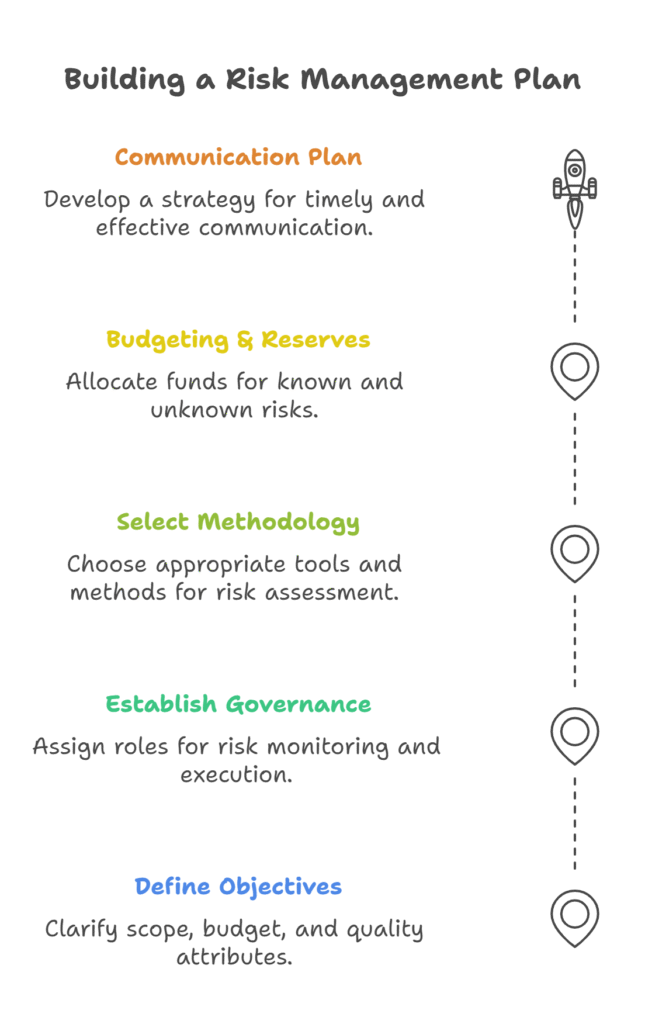
6.3 Select Methodology & Tools
- Scales (1-5 or 1-10)
- Probability/impact matrix design
- Quant methods to be used (EMV, Monte Carlo)
- Tool stack (Excel, SharePoint, Planview, Jira plug-ins)
6.4 Budgeting & Reserves
| Reserve Type | Purpose |
| Contingency | Known unknowns (in baseline) |
| Management | Unknown unknowns (held by exec sponsor) |
6.5 Communication Plan
- Who gets what? Sponsor summary vs. team-level details.
- How often? Weekly digest, phase-gate report, ad-hoc alert
- Channels? Dashboards, email, stand-ups, steering committee packs
7. Risk Identification in Action
Step-by-step workshop recipe
- Prep
- Invite SME mix (technical, legal, ops, vendor).
- Share pre-read: objectives, context, prior risk logs.
- Session (90 min)
- 10 min: state goals & rules (all ideas welcome).
- 40 min: silent brainstorming → round-robin sharing.
- 30 min: categorize & combine duplicates.
- 10 min: quick probability/impact voting with dots.
- Post-session
- Consolidate in register.
- Assign provisional owners.
- Schedule assessment meeting.
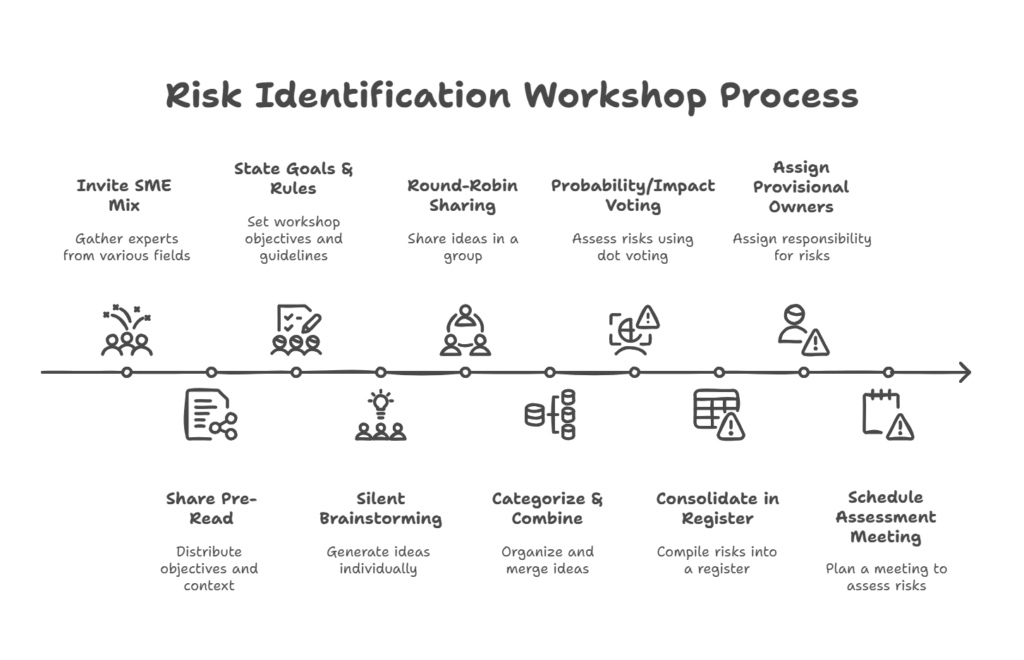
8. Assessing & Prioritizing
8.1 Fast Qualitative Scoring Grid
| Impact ↓ / Probability → | 1 Very Low | 2 Low | 3 Med | 4 High | 5 Very High |
| 5 Critical | 5 | 10 | 15 | 20 | 25 |
| 4 Major | 4 | 8 | 12 | 16 | 20 |
| 3 Moderate | 3 | 6 | 9 | 12 | 15 |
| 2 Minor | 2 | 4 | 6 | 8 | 10 |
| 1 Negligible | 1 | 2 | 3 | 4 | 5 |
- Score ≥15? -> Red → fund mitigation immediately.
- Score 6-12? -> Amber → plan response, monitor.
- Score ≤5? -> Green → accept & watchlist.
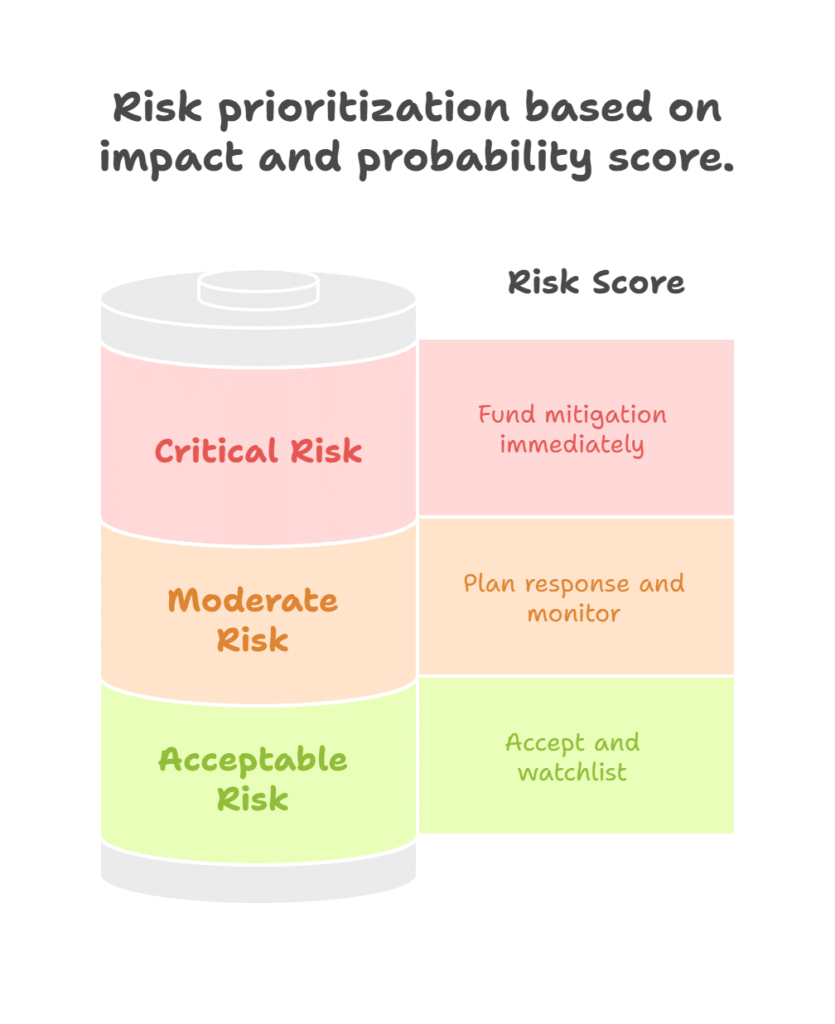
8.2 Quant Tricks for Priority 1 Risks
- Three-point estimate (Best, Most Likely, Worst) for EMV.
- @Risk or Primavera Risk Analysis plug-ins for Monte Carlo, 1,000+ iterations give a probabilistic cost or schedule S-curve.
- Sensitivity tornado charts to see which risks drive 80 % of exposure focus there.
9. Crafting & Executing Responses
9.1 Response Planning Checklist
- ☐ Response type chosen & justified
- ☐ Budget/time impact approved
- ☐ Action owner and due date set
- ☐ Success criteria defined (probability cut from 0.6 → 0.2, etc.)
- ☐ Residual risk re-scored
9.2 Embedding Responses into the Schedule
- Add mitigation tasks with predecessors & resource assignments.
- Flag tasks as “Risk Mit” in WBS for easy filtering.
- Link contingency releases to tangible triggers (e.g., design sign-off).
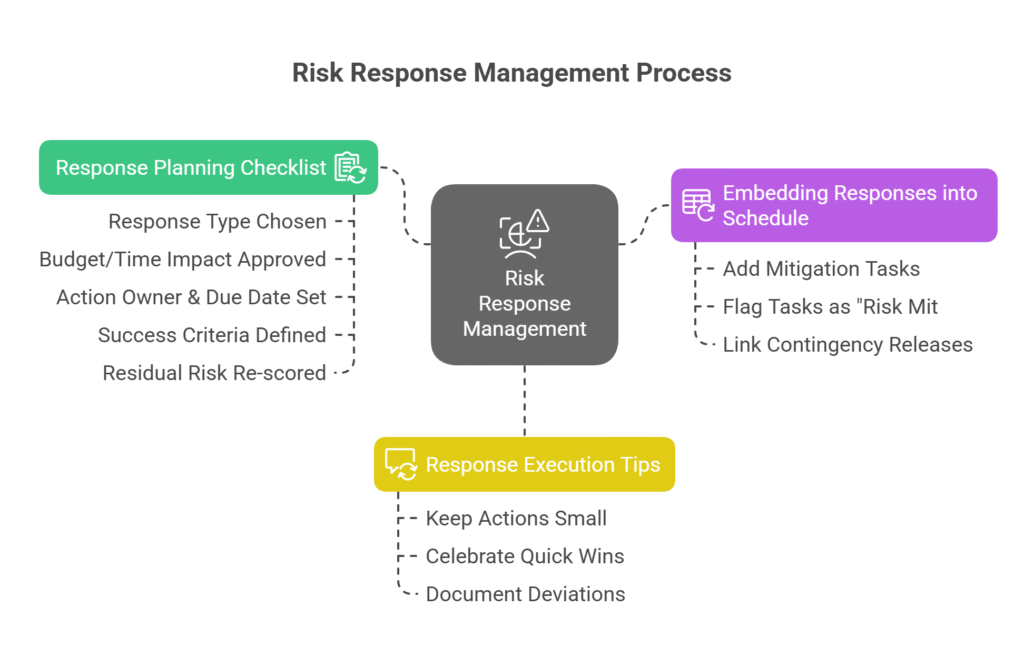
9.3 Response Execution Tips
- Keep actions small & time-boxed momentum beats perfection.
- Celebrate quick wins; visible progress sustains buy-in.
- Document deviations great fodder for lessons learned and audit trail.
10. Monitoring, Controlling & Communicating
10.1 Metrics That Matter
| Metric | What It Tells You |
| Open-risk count (red/amber) | Are threats growing or shrinking? |
| Mitigation velocity | % of planned responses completed on time |
| Contingency draw-down | How fast are we burning our buffer? |
| Issue conversion rate | How many risks turned into significant issues? |
10.2 Cadences
- Weekly – team stand-up: new risks, status colour-swap.
- Monthly – steering committee: exposure trend, approvals.
- Phase-gate – update risk baseline; decide funding top-ups.
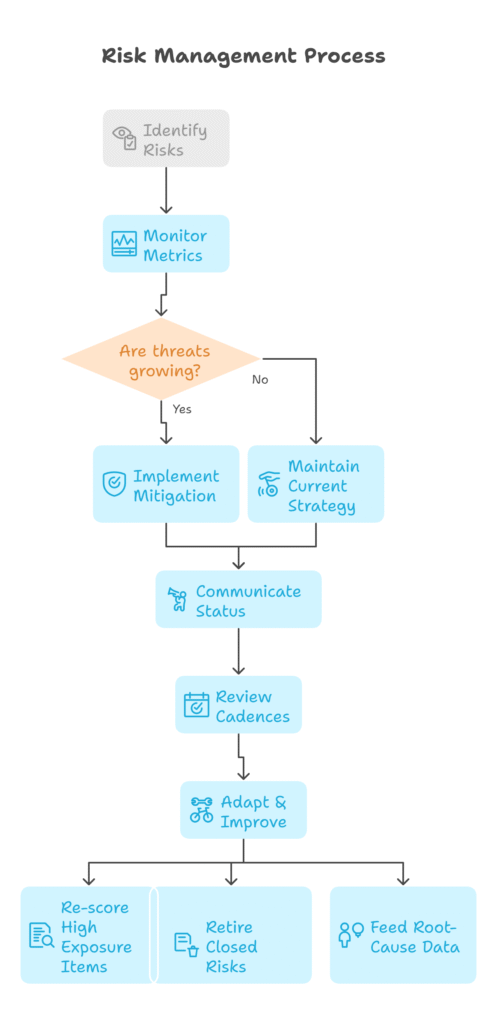
10.3 Adapt & Improve
- Re-score high exposure items every cycle.
- Retire closed risks, archive evidence.
- Feed root-cause data into organizational lessons-learned.
11. Integrating Risk with the Wider PM Ecosystem
| PM Process | Risk Touchpoint |
| Scope | Assumption log feeds risk register. |
| Schedule | Mitigation tasks extend critical path? adjust float. |
| Cost | Contingency embedded in baseline, tracked in EVM. |
| Quality | Defect trends can trigger new technical risks. |
| Procurement | Transfer strategies formalized via contract clauses. |
Collaboration is king: finance, legal, tech, and ops all influence and are influenced by project risk.
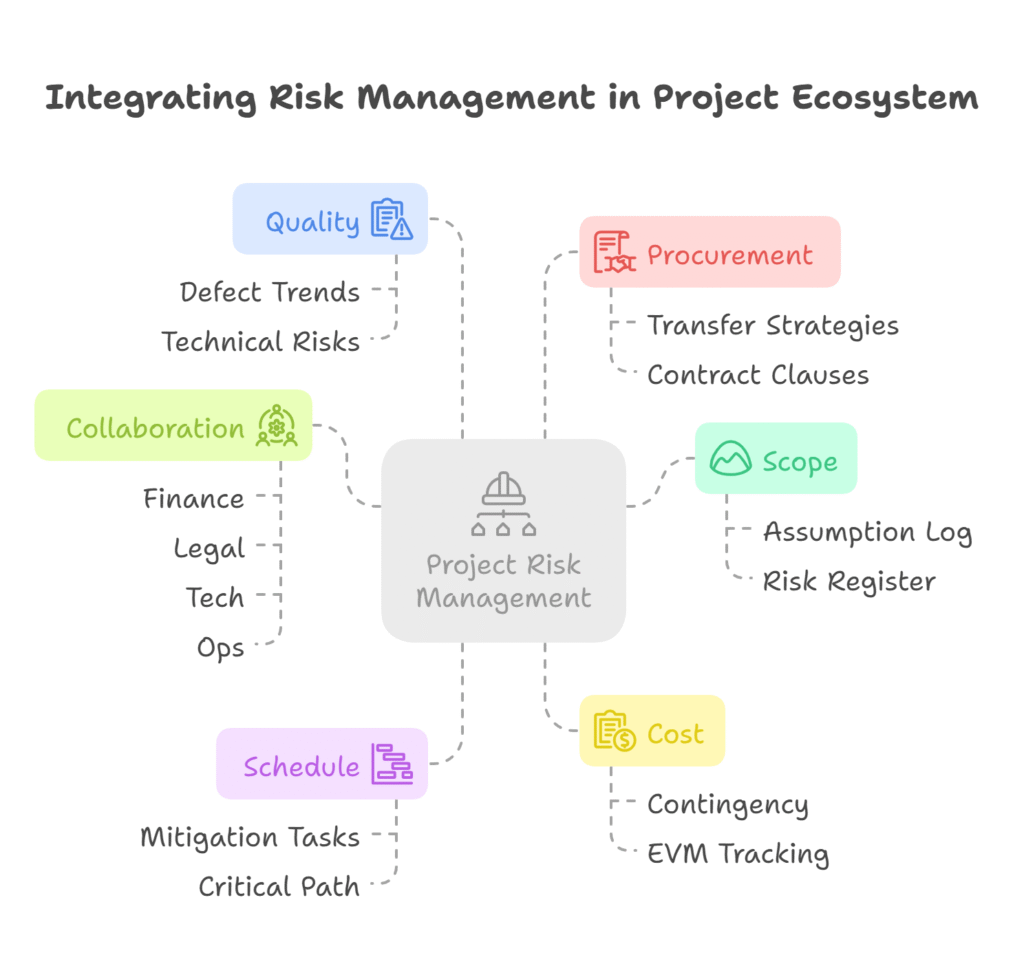
12. Mini Case Study: Turning Compliance Chaos into a Competitive Win
Industry: FinTech
Problem: New regulation threatened $5 M penalties.
Approach:
- Identified 42 regulatory-change risks in a 3-hour SME workshop.
- Quantified “worst case” cost via EMV = $1.2 M.
- Allocated $200 k mitigation budget; top actions embedded in sprint backlog.
Outcome: - 96 % of requirements implemented 2 months early.
- Audit cycle time cut by 66 %.
- Company spun compliance readiness into a marketing differentiator netting three enterprise clients.

13. PMI-RMP Exam Prep Cheat Sheet
- Start with the PMI “Standard for Risk Management” know the five process groups cold.
- Flash-card ITTOs Inputs, Tools & Techniques, Outputs.
- Practice 1,000+ questions shoot for 75 % average.
- Simulate the 3.5-hour test environment manage stamina.
- Review every wrong answer focus on why you missed it.
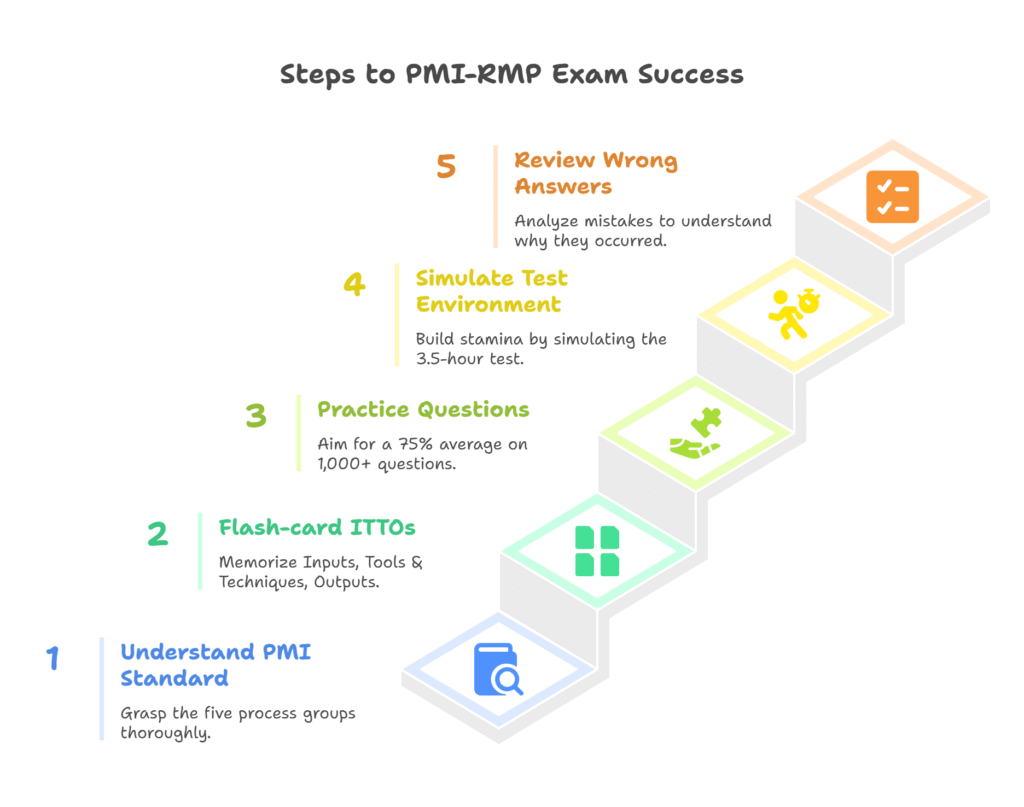
14. Continuous Improvement: Building a Risk-Smart Culture
- Post-mortems = gold mines make them blameless, fact-based, actionable.
- Rotate “Risk Captain” role across team members to spread knowledge.
- Tie performance bonuses partly to risk KPIs (e.g., mitigation completion rate).
- Share success stories across the org nothing sells risk discipline like visible wins.
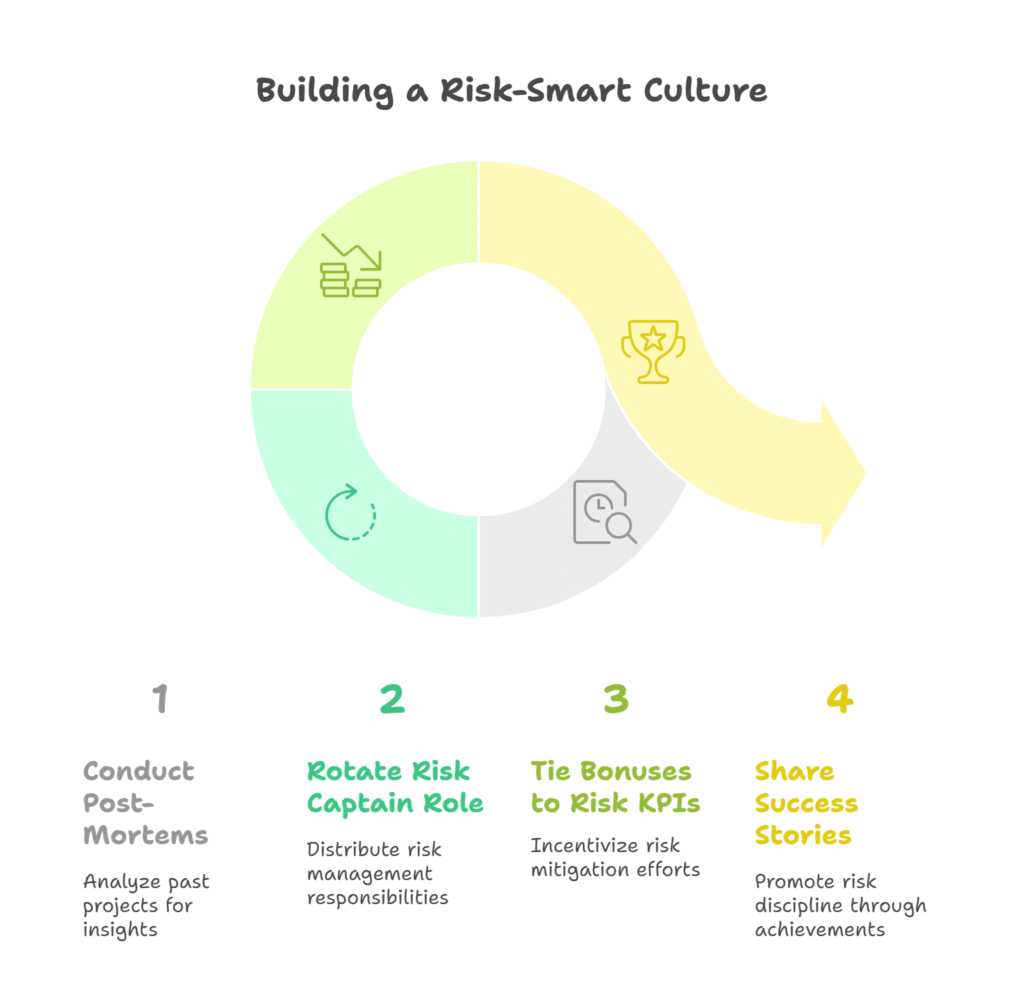
15. Key Takeaways
- Start early, iterate often. The sooner risks surface, the cheaper the fix.
- Prioritize ruthlessly. Focus 80 % of effort on the top 20 % threats.
- Document decisions. A transparent trail saves arguments later.
- Quantify to persuade. Dollars and days win executive minds faster than colours.
- Culture beats process. Tools help; shared ownership delivers.
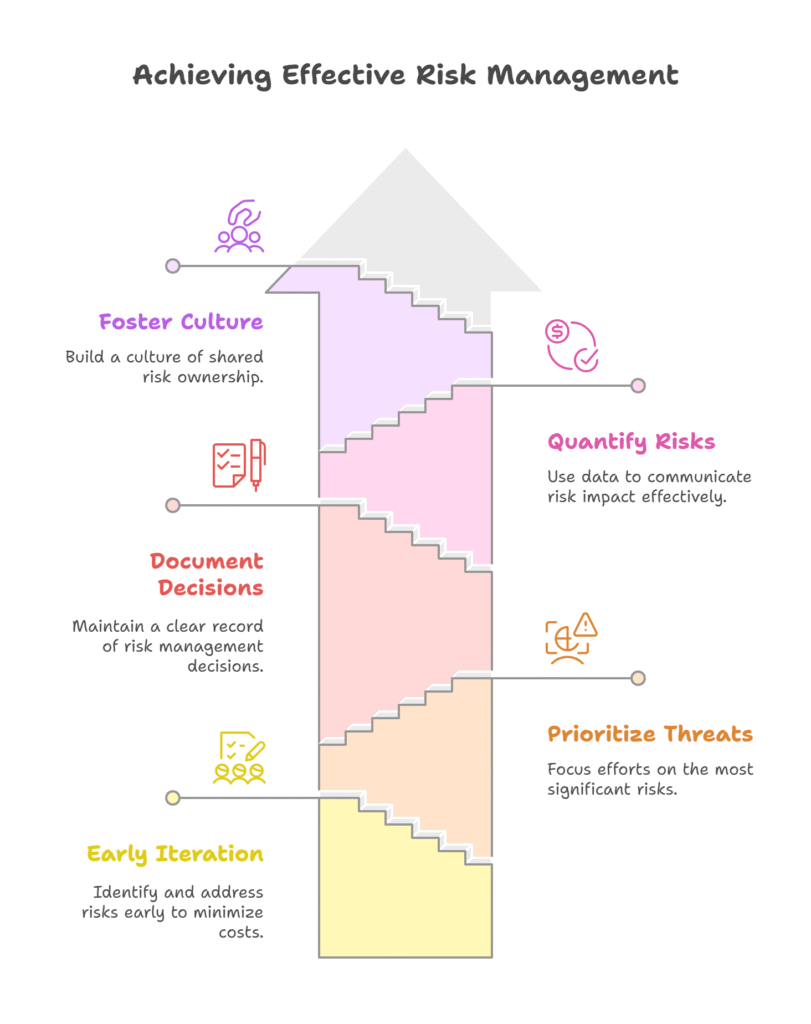
Ready to Deliver with Confidence?
Whether you are studying for the PMI-RMP or levelling up your day-to-day delivery game, embed this lifecycle identify → analyse → respond → monitor → learn and watch uncertainty turn into opportunity.
Now go transform your next project from high-risk to high reward.
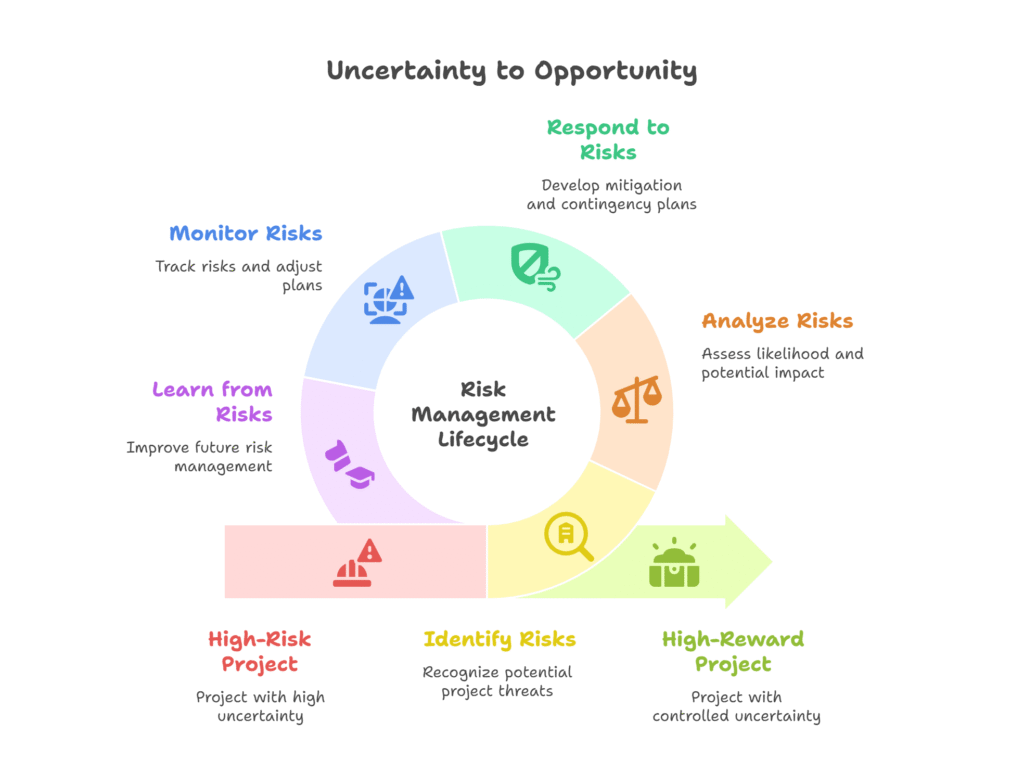
References
- PMI Pulse of the Profession 2015 – High-Performing Organizations Project Management Institute
- Stakeholder-Centric Risk & Project Success (PMI) Project Management Institute

| Lifecycle Stage | Key Levers you can Adjust | Illustrative Scenario (one per risk category) | Why / What You Assess |
| 1. Risk Strategy & Planning | • Define risk appetite scale (cost %, time %, defect density) • Choose governance cadence (weekly PRC, monthly PSC) • Allocate contingency reserves • Select tooling (ServiceNow IRM vs Jira plug-ins) | Technical – Decide whether to target 99.95 % or 99.99 % uptime for a SaaS cut-over. Compliance – Commit to “no high-severity vulnerabilities at go-live.” | Test alignment between appetite, budget, and delivery ambition. |
| 2. Risk Identification | • Workshop formats (brainstorm, premortem, Delphi) • Taxonomy depth (high-level vs granular) • Stakeholder lenses (IT, Ops, Legal, Finance) | Legal – Premortem reveals open-source licence conflicts in a micro-service slated for production. Operational – Gemba walk uncovers single-person knowledge silo in batch-job recovery. | Ensures a complete, bias-reduced risk register. |
| 3. Qualitative/Quantitative Analysis | • Scoring matrix weightings (P×I, with or w/o detectability) • Monte-Carlo settings (# iterations, PERT ranges) • Decision-tree vs Tornado chart depth | Financial – Monte-Carlo shows P90 budget overrun of +11 %, breaching the +8 % appetite. Strategic – Tornado chart ranks AI-feature delay as top contributor to NPV loss. | Converts raw risks into prioritised, data-backed focus items. |
| 4. Risk Response | • Strategy selection (Avoid, Mitigate, Transfer, Accept) • Funding trigger points (e.g., drawdown at RPN ≥ 7) • SLA / contract clauses for transfer | Technical – Avoid go-live clash by re-sequencing release calendar. Compliance – Transfer potential PCI fines via cyber-insurance rider. | Balances cost of action vs cost of exposure. |
| 5. Monitor & Control | • KRI thresholds (e.g., latency > 1 s, backlog > 20 tickets) • Dashboard frequency • Audit sampling size • Escalation rules (24 h vs 72 h) | Operational – Real-time KRIs flag 3PL API latency spike, triggering vendor escalation. Public-Perception – Social-listening tool shows 20 % rise in negative sentiment post-migration. | Keeps live view of residual exposure; validates effectiveness of responses. |
| 6. Closure & Lessons Learned | • Exit criteria (variance < 0.1 %, zero Sev-1 for 30 days) • Retrospective format (blameless RCA, AAR) • Knowledge-base tagging | Technical – Close outage-risk once dual-data-centre replication runs for 60 days without failover. Compliance – Close GDPR-risk after external audit attestation letter received. | Ensures organisational learning and prevents risk re-entry. |
Grab your copy of Mastering PMP® Certification for IT Professionals and unlock access to the full digital product!
Want a sneak peek? Visit Grow exponentially with Techno Evangelist for a free preview.
Thanks for reading the article “Project Risk Management Plan” and read all articles on Project Management

